Introduction
In today's fast-paced digital environment, the efficiency of IT helpdesk services can significantly impact an organization's overall performance and customer satisfaction. A comprehensive ticketing system is the cornerstone of effective support, enabling users to submit, track, and manage their requests seamlessly. Platforms like Zendesk, known for their robust features and scalability, offer powerful solutions but may pose challenges for smaller teams.
Implementing an integrated, user-friendly ticketing system that aligns with an organization's IT strategy is essential for enhancing visibility and optimizing resource allocation.
Efficient categorization and prioritization of support tickets further streamline workflows, ensuring critical issues receive prompt attention. A priority matrix that evaluates urgency and impact, coupled with automation and integration, can drastically reduce resolution times and improve service quality. Customer experience remains a focal point, and regular feedback mechanisms, along with staff training on empathy and soft skills, can elevate user satisfaction.
Knowledge management systems play a vital role by providing accessible repositories of information, fostering a culture of knowledge sharing, and ensuring employees have the resources they need. Standard Operating Procedures (SOPs) and Key Performance Indicators (KPIs) are indispensable tools for maintaining consistency, efficiency, and continuous improvement. Multi-channel support, leveraging phone, email, chat, and self-service portals, meets diverse user preferences and enhances overall service delivery.
By adopting these strategies and tools, organizations can build a resilient, responsive, and customer-centric IT helpdesk that not only meets but exceeds expectations in a competitive landscape.
Implementing a Comprehensive Ticketing System
A thorough ticketing framework is crucial for effective IT support operations. It should enable users to submit, track, and manage their support requests effortlessly. For example, platforms like Zendesk offer a feature-rich environment with strong integrations and scalability, making them suitable for large enterprises. However, they can be complex for smaller teams and come with higher pricing. As emphasized by Rebecca Wettemann, the gap in automation within customer service is often due to multiple platforms managing interactions, which can be alleviated by integrated solutions like Zendesk.
Implementing a user-friendly ticketing solution that integrates well with existing IT management tools is crucial. This approach not only streamlines processes but also enhances visibility into outstanding issues, facilitating better resource allocation. Cloud-based help desk software, or SaaS, offers advantages like easy setup, minimal IT maintenance, and accessibility from anywhere, though it relies on a stable internet connection and comes with data security considerations. On-premise help desk software, while offering high customization and control, requires more in-house resources.
Ultimately, choosing the appropriate ticketing platform relies on your organization's specific needs, ensuring that the solution aligns with your overall IT strategy and operational requirements.
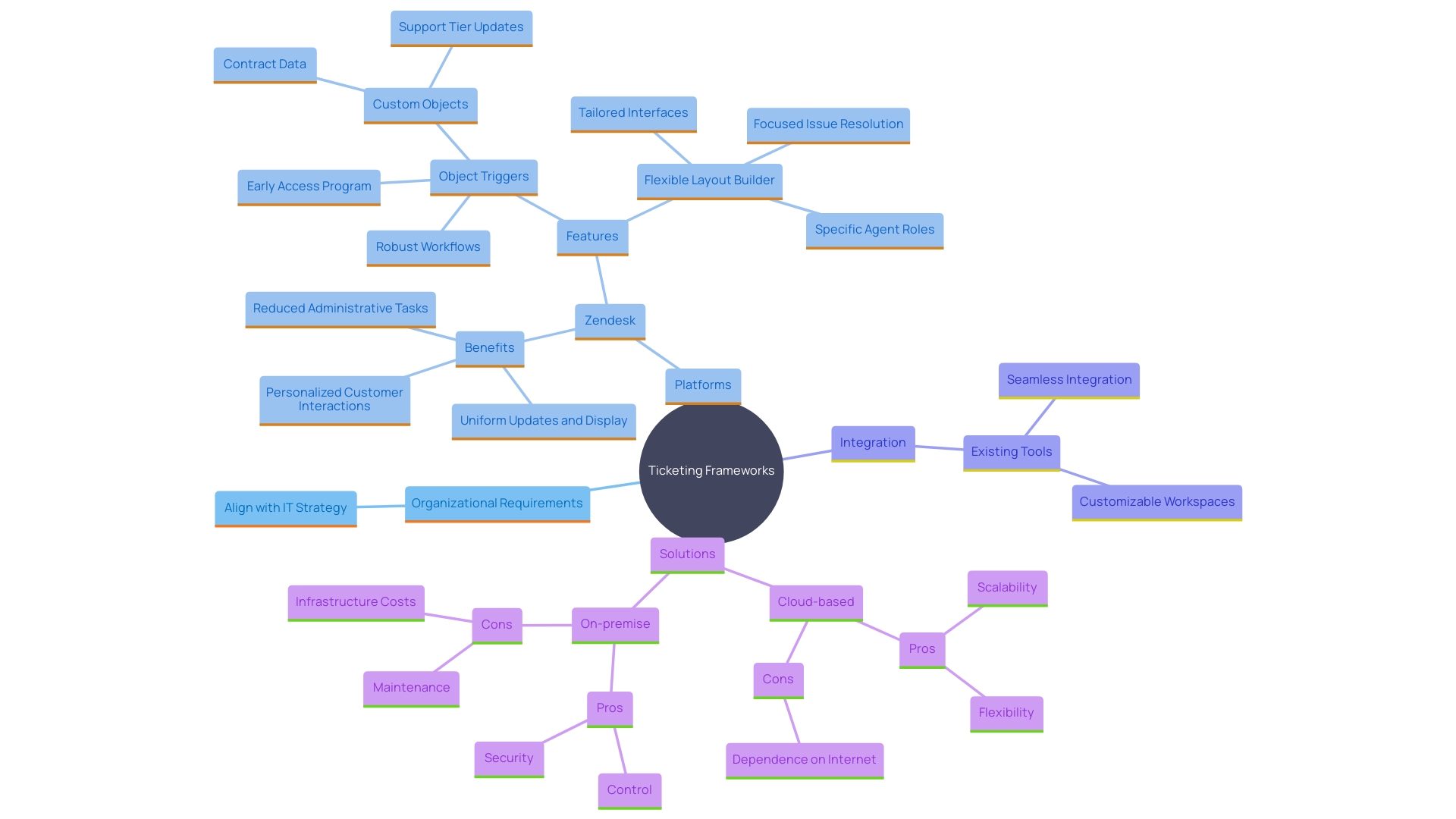
Categorizing and Prioritizing Tickets Effectively
Efficient categorization and prioritization of service tickets are essential for decreasing resolution times and improving user satisfaction. By establishing clear categories for issues—whether they are hardware, software, or network-related—teams can streamline their workflows. Implementing a priority matrix that evaluates the urgency and impact of each issue ensures that critical problems are promptly addressed. According to a study by Valoir, automation and integration of support networks can significantly enhance efficiency. Valoir CEO Rebecca Wettemann emphasizes that many client support organizations fall behind other divisions due to the intricacy of handling numerous systems. To address this, businesses can adopt automated workflows and integrate platforms for a unified client view. For instance, Zendesk's custom objects enable teams to automate processes like updating assistance levels based on contract information, allowing agents to concentrate more on personalizing client interactions. This approach not only enhances service delivery but also creates a strong and adaptable support environment, crucial for sustaining high client satisfaction.
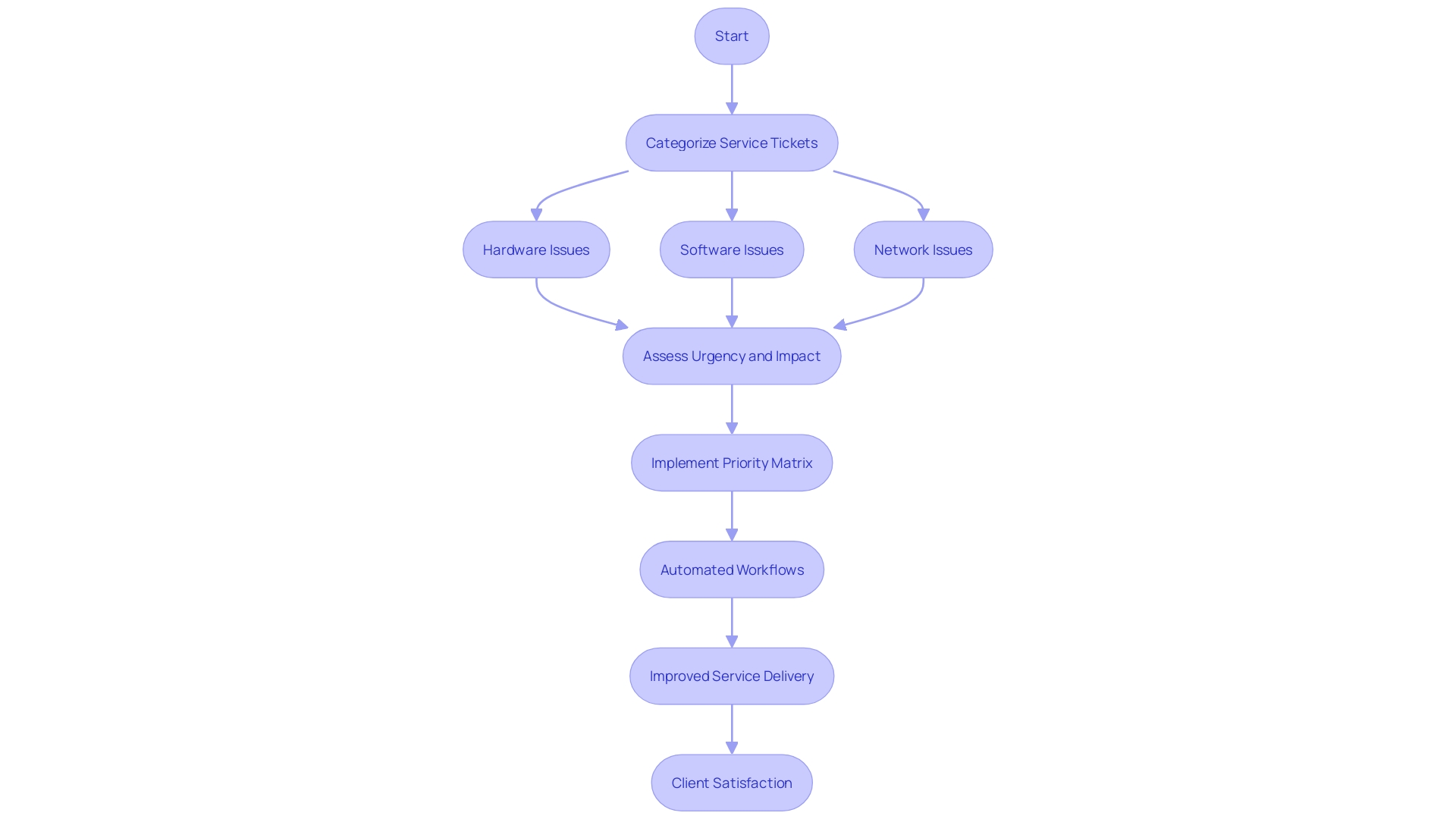
Focusing on Customer Experience
Focusing on user experience is crucial for IT helpdesk operations. Engaging with users through regular feedback mechanisms such as surveys and direct communication helps identify pain points and areas for improvement. This approach is significantly beneficial, as highlighted by industry leaders who emphasize the importance of digital integration for enhancing customer interactions. Educating personnel on interpersonal abilities and compassion can also enhance the quality of assistance offered, resulting in more favorable user experiences. For instance, Delivery Hero, a global leader in local delivery services, faced substantial challenges with employees getting locked out of their accounts. By enhancing their procedures and focusing on user experience, they successfully reduced the time spent resolving these issues, leading to increased productivity and satisfaction among their 53,000 employees. Embracing such strategies ensures that customer care functions not only meet but exceed expectations, leveraging technology and human interaction to deliver exceptional support.
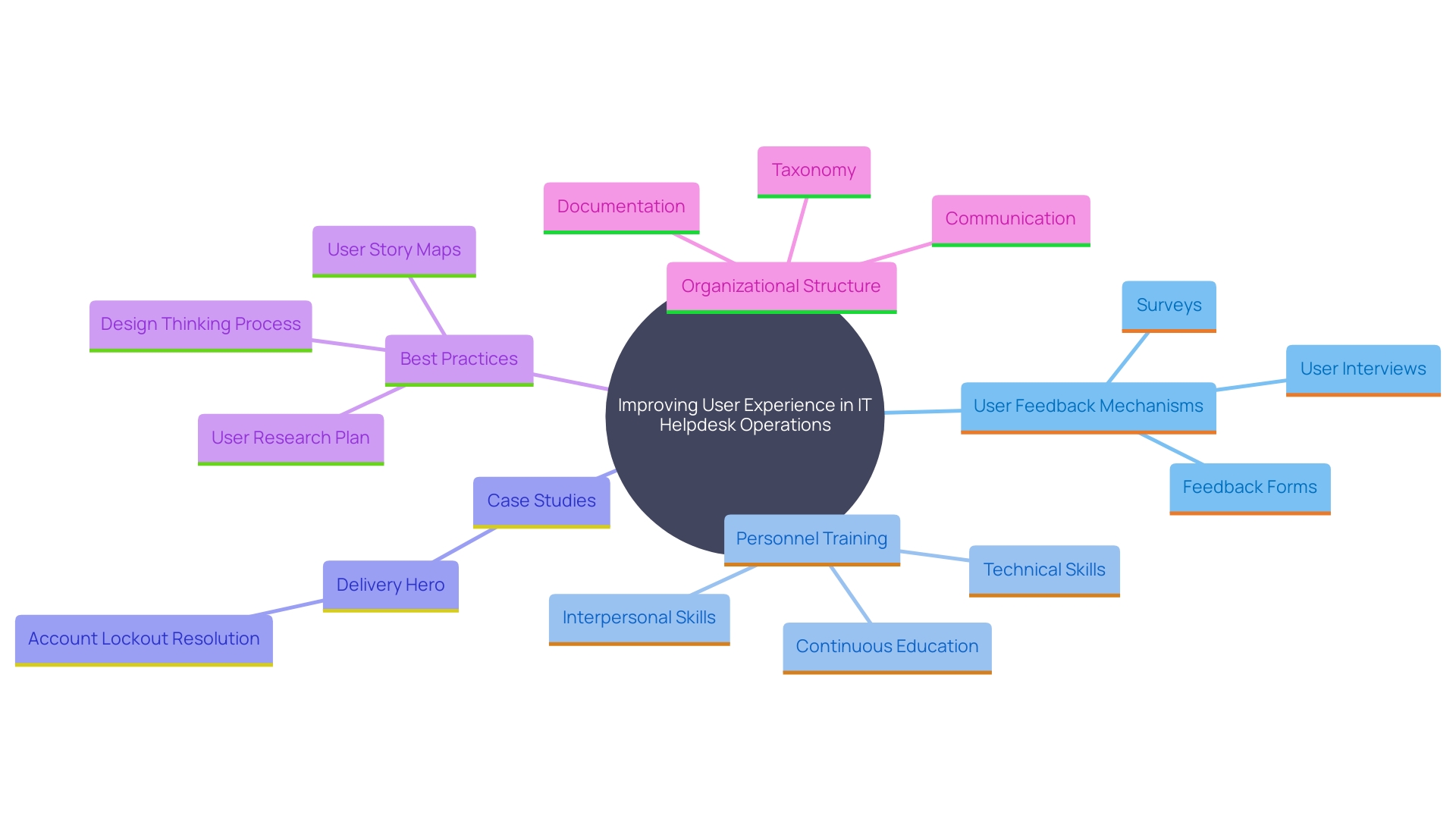
Utilizing Knowledge Management Systems
A robust knowledge management framework is essential for documenting solutions and best practices, enabling organizations to thrive in a rapidly changing landscape. These frameworks often encompass FAQs, troubleshooting guides, and step-by-step procedures for common issues. By creating a repository that helpdesk staff and users can easily access, organizations can significantly increase resolution speed and reduce repetitive queries.
Knowledge management tools allow companies to build, manage, and optimize a library of information that promotes team collaboration, onboarding, and continuous learning. For example, internal knowledge bases serve as self-service libraries containing documentation, tutorials, and how-to guides, which are invaluable for employees. This approach not only fosters a culture of knowledge sharing but also ensures that employees always have the information they need to work effectively.
Jeremy Carter, Associate Director of Knowledge Management & Measures Office at the IRS, emphasizes the importance of knowledge management in shaping the future of work, stating, 'In our digitized and interconnected world, KM enables organizations to stay competitive and adapt to the rapidly changing landscape.'
By leveraging both internal IT resources and external vendors with specialized expertise, organizations can maximize the value and utility of their knowledge management systems, ensuring they remain competitive and agile in the face of evolving industry challenges.
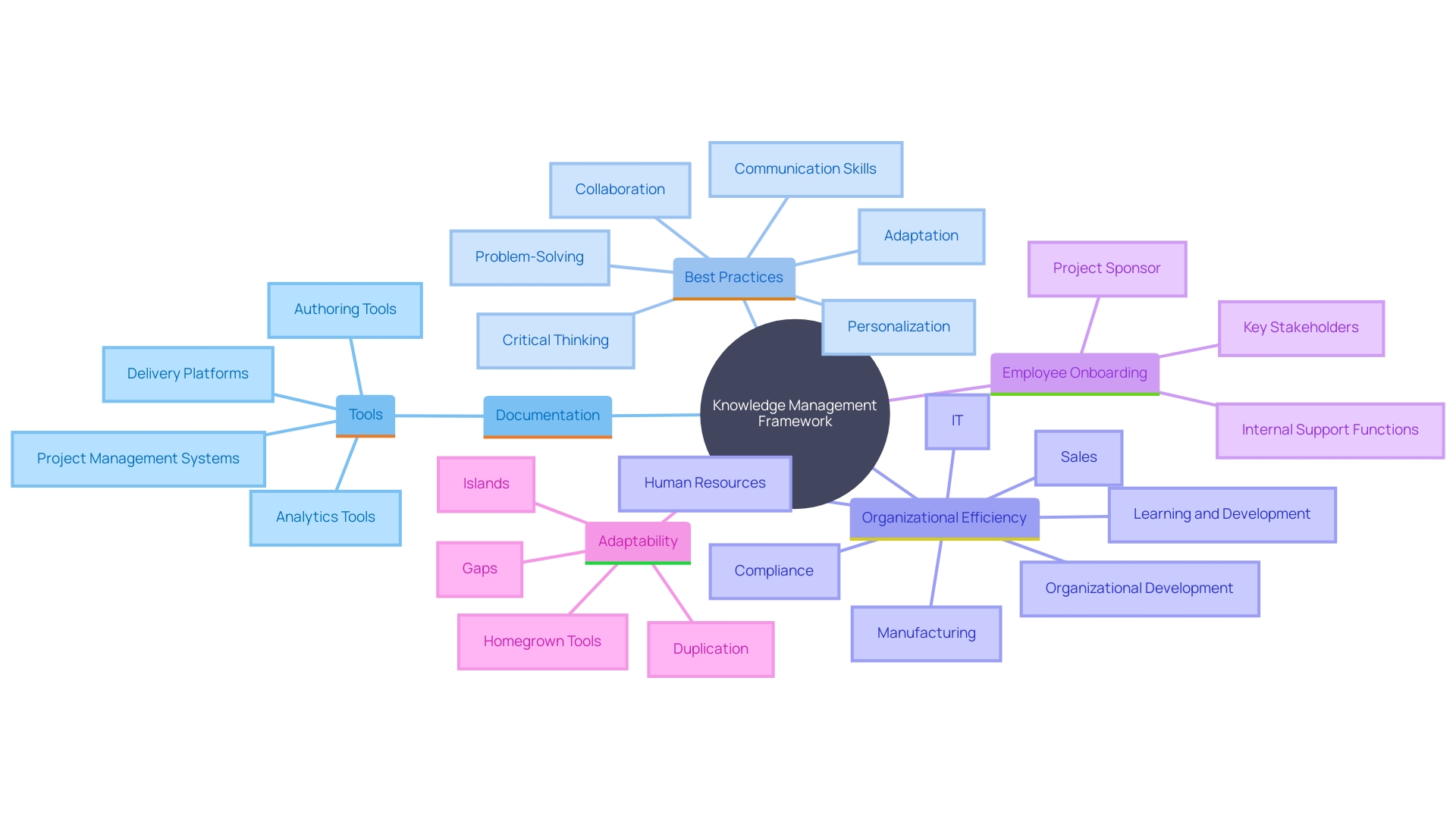
Establishing Standard Operating Procedures (SOPs)
Establishing and maintaining Standard Operating Procedures (SOPs) for IT helpdesk functions is crucial for achieving consistency and efficiency. These SOPs should meticulously detail the processes for ticket management, escalation protocols, and communication guidelines. Regular updates and reviews are necessary to ensure that SOPs remain aligned with technological advancements and evolving organizational needs. With a well-documented framework, team members can access the latest guidelines, reducing the time spent resolving issues and enhancing overall productivity. For instance, Delivery Hero, a global delivery platform operating in over 70 countries, faced significant challenges with account lockouts affecting employee productivity. By implementing an efficient SOP under the guidance of their IT support delivery team, they managed to streamline the recovery process, significantly reducing downtime and improving operational efficiency.
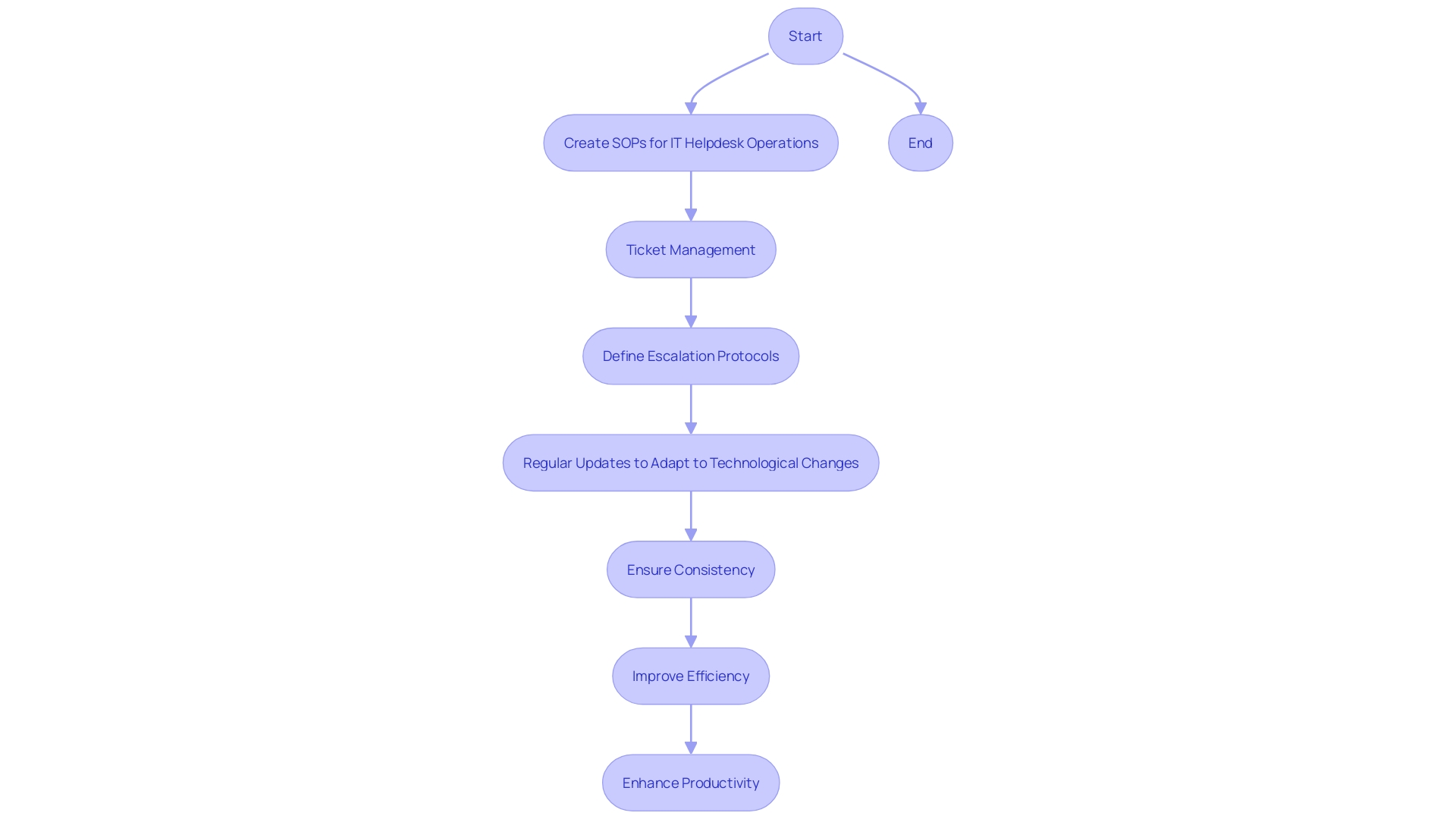
Monitoring and Measuring Performance with Key Performance Indicators (KPIs)
Optimizing IT helpdesk services requires vigilant tracking of specific Key Performance Indicators (KPIs) to gauge and enhance operational efficiency. Essential metrics include average resolution time, ticket volume trends, and customer satisfaction scores. Average handling time (AHT) divides into parts such as talk time, hold time, and follow-up activities, each contributing a segment of the overall assistance process. For instance, technical support centers typically have longer AHT due to the complexity of queries.
Regularly reviewing these metrics is crucial. In the present client support environment, expectations are soaring, requiring quicker and superior quality experience. Utilizing tools such as Zendesk’s Workforce Engagement Management (WEM) solution can assist in addressing these challenges by optimizing operational processes. 'Their AI-driven workforce management (WFM) and quality assurance (QA) capabilities empower organizations to provide exceptional client interactions.'.
Benchmarking performance with industry standards reveals that the call center turnover rate averages between 30-45% annually, primarily due to stress, repetitive tasks, and demanding goals. Comprehending and tackling these challenges can result in considerable enhancements in provision and employee retention. Moreover, monitoring call abandonment rates, which vary from 5-8% based on the industry, can offer insights into client frustration areas and assist in enhancing support strategies.
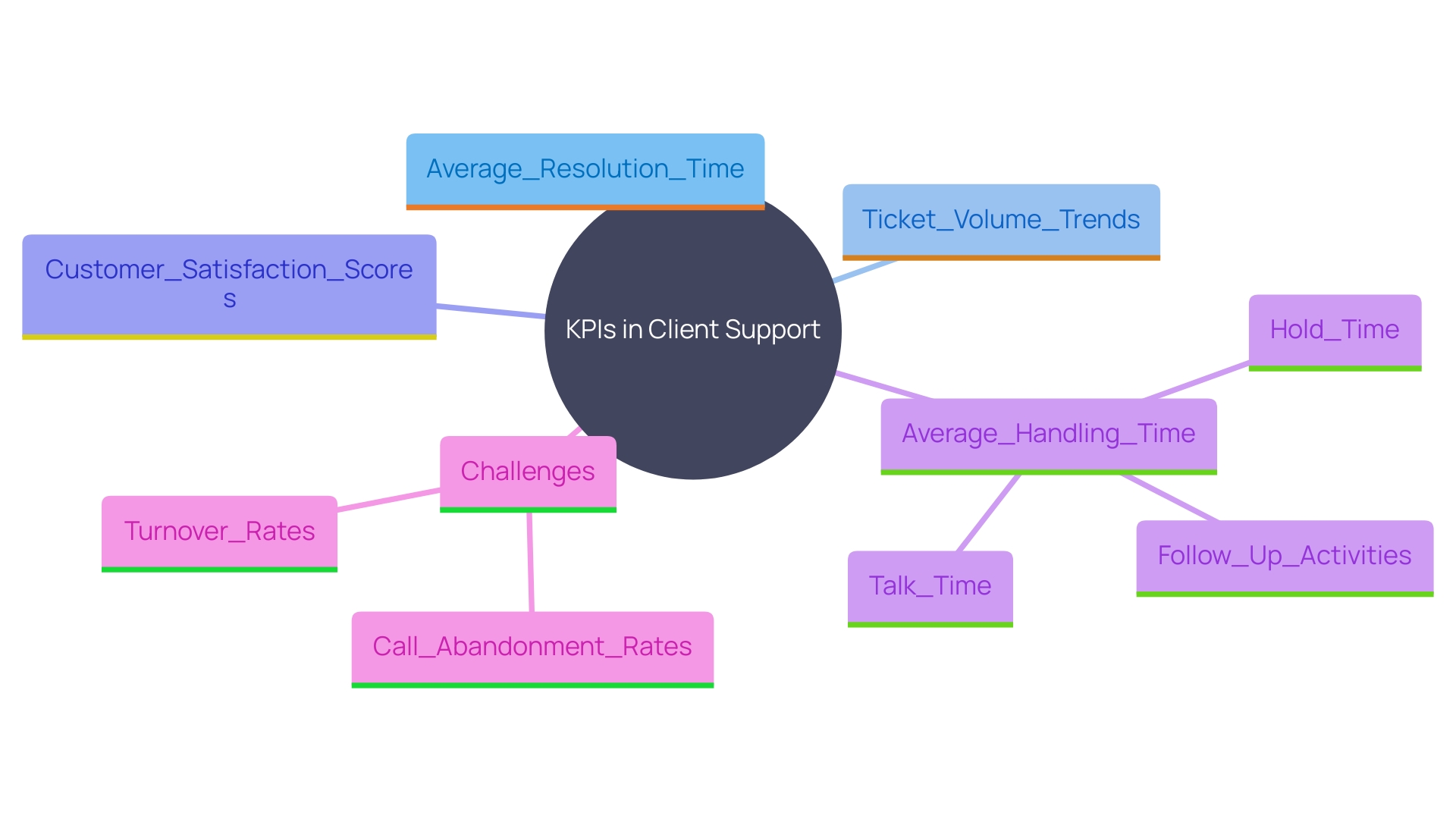
Offering Multi-Channel Support
Providing multi-channel support through phone, email, chat, and self-service portals allows users to reach out via their preferred method, significantly enhancing user satisfaction and reducing wait times. The integration of these channels is crucial. An omnichannel strategy guarantees a cohesive customer experience, where information is exchanged across all interactions, allowing smooth transitions and preserving consistent quality. Digital communication platforms have achieved high acceptance across generations, with email still important for older consumers. In fact, more than half of businesses expect digital channels to account for over 40% of inbound contacts within the next three years. AI tools, including chatbots and automated email responses, play a pivotal role in this ecosystem, offering predictive support and personalized interactions. As many as 95% of businesses are witnessing an increase in self-service requests, highlighting the growing demand for efficient and autonomous service solutions. This trend underscores the necessity for companies to adopt advanced digital technologies to stay competitive and meet evolving customer expectations.
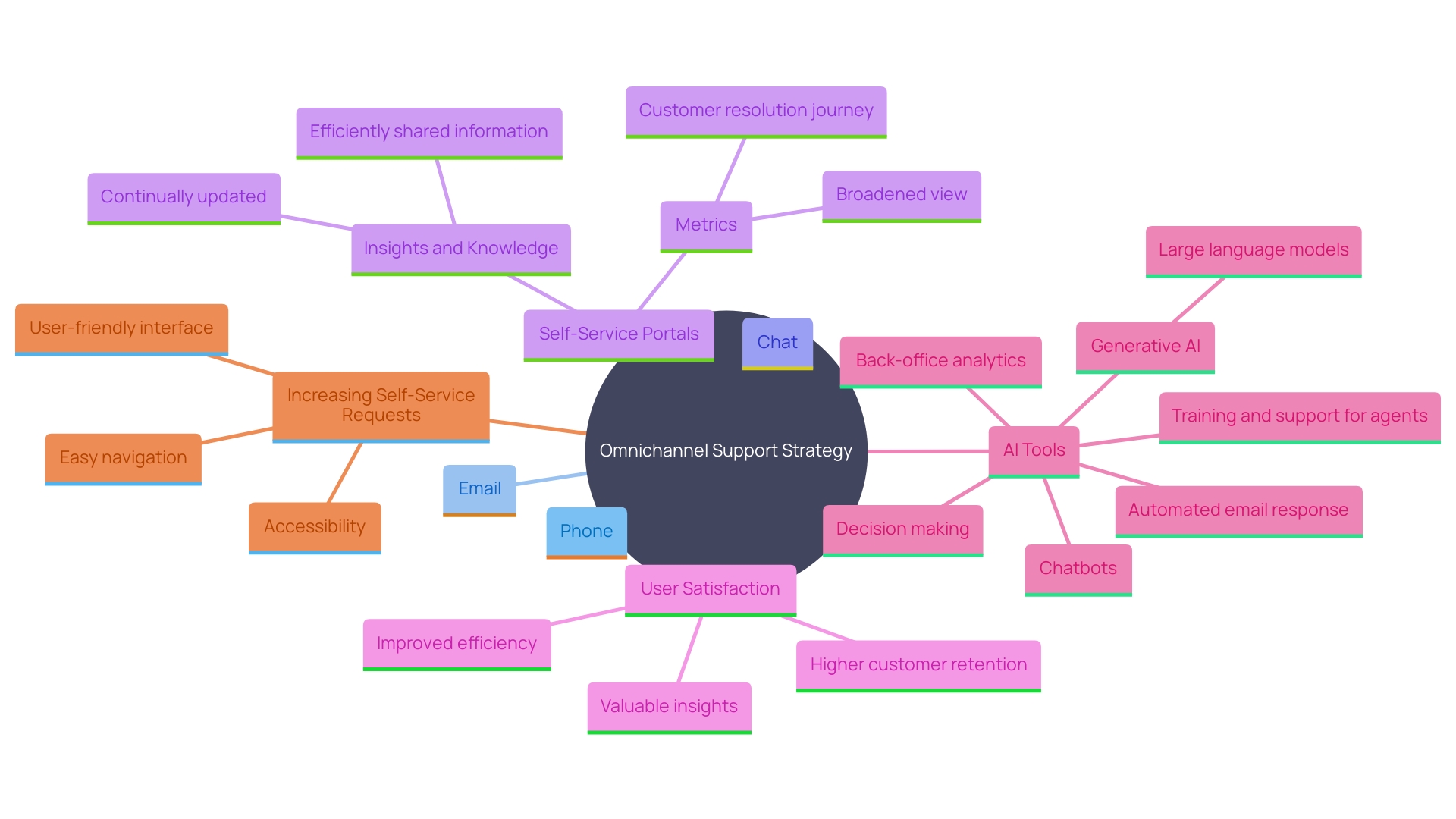
Conclusion
The implementation of a comprehensive ticketing system is vital for enhancing the efficiency of IT helpdesk services. Such systems not only facilitate seamless user interactions but also align with an organization's IT strategy, ensuring that support requests are managed effectively. Selecting the right platform, whether it be a robust solution like Zendesk or a more tailored option, is crucial for addressing the specific needs of the organization and optimizing resource allocation.
Effective categorization and prioritization of support tickets are essential components that directly influence resolution times and overall user satisfaction. By employing a priority matrix and integrating automated workflows, organizations can ensure that critical issues are addressed promptly, thereby maintaining a high standard of service. The focus on customer experience, supported by regular feedback mechanisms and staff training, further enhances the quality of support provided, fostering positive user interactions.
Knowledge management systems serve as invaluable resources, offering accessible repositories of information that promote collaboration and continuous learning. Establishing Standard Operating Procedures (SOPs) ensures consistency and efficiency in ticket management, while monitoring Key Performance Indicators (KPIs) allows organizations to measure and refine their operational performance effectively.
Finally, adopting a multi-channel support approach enhances user satisfaction by providing customers with various avenues for assistance. The integration of these channels creates a cohesive experience, ensuring that customer interactions are streamlined and efficient. By embracing these strategies, organizations can build a resilient and customer-centric IT helpdesk that not only meets but exceeds the expectations of users in a competitive landscape.




